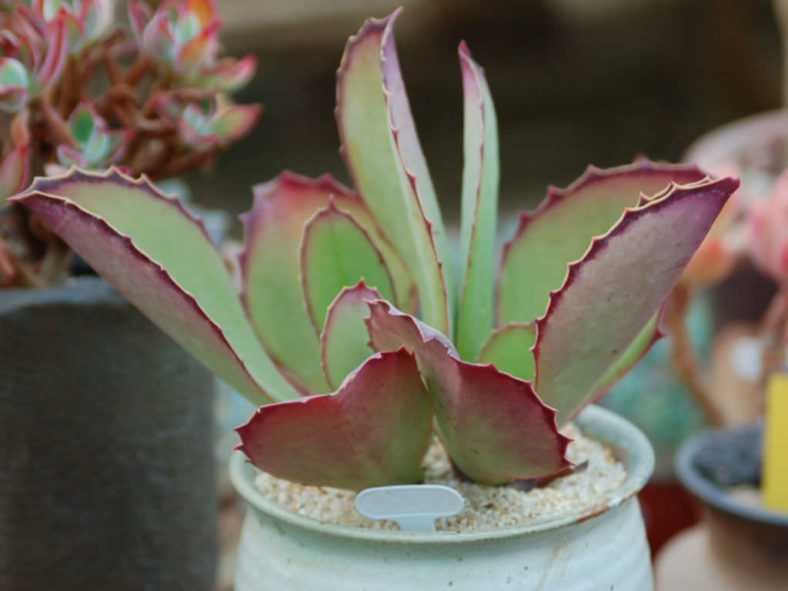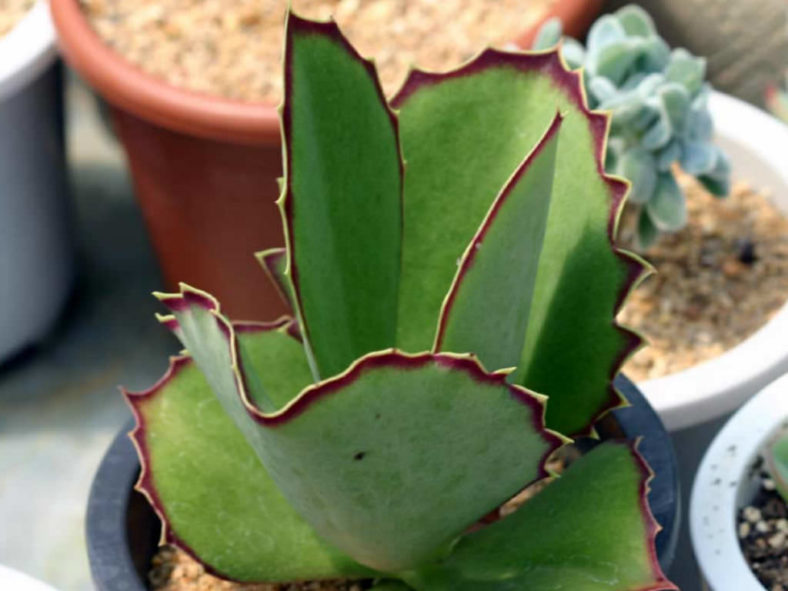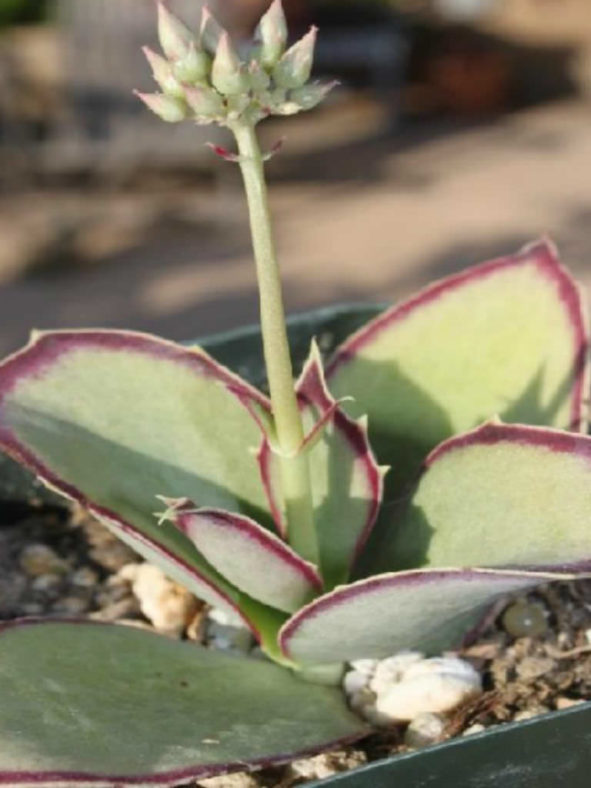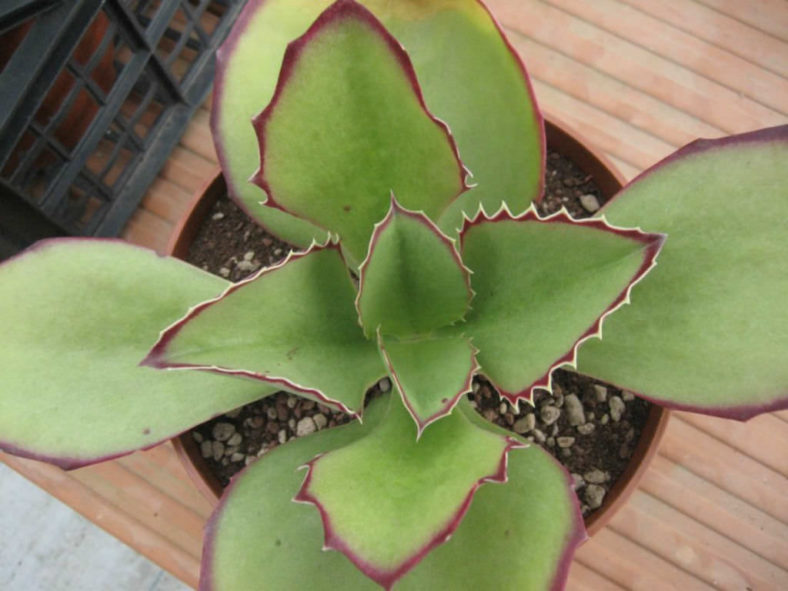Scientific Name
Kalanchoe synsepala Baker
Common Name(s)
Cup Kalanchoe, Walking Kalanchoe
Synonym(s)
Kalanchoe brachycalyx, Kalanchoe gentyi, Kalanchoe trichantha
Scientific Classification
Family: Crassulaceae
Subfamily: Sedoideae
Tribe: Kalanchoeae
Genus: Kalanchoe
Etymology
The specific epithet "synsepala" (pronounced "sin-SEP-al-uh") means "grouped sepals" and refers to the sepals of this species, which are fused into a tube.
Origin
Kalanchoe synsepala is native to Madagascar. It occurs in the central and southern parts of the island, growing in rocky, sunny places.
Description
Kalanchoe synsepala is an attractive succulent with fleshy, grey-green leaves with pink-purple margins. It is very variable in size and shape and can grow up to 20 inches (50 cm) tall. The leaves are orbicular with a rounded tip, measuring up to 6 inches (15 cm) in length and 2.8 inches (7 cm) in width. Their margins can be entire or have rigid teeth, sometimes with dissected edges. This plant produces baby plants at the ends of long stems, which eventually bend to the ground and take root, hence its common name.
The flowers are small, tubular, and 4-angled. They are pale pink to reddish and usually appear in two opposite, very dense, corymbose cymes in mid-fall.

Forms of Kalanchoe synsepala
How to Grow and Care for Kalanchoe synsepala
Hardiness: USDA hardiness zones 9b to 11b: from 25°F (-3.9°C) to 50°F (10°C).
Kalanchoe care is minimal, but be cautious about light levels. Intense sunlight can burn the tips of the leaves. Place pots in partial sun to light shade areas when growing Kalanchoes.
The flowering varieties are highly rewarding for their colorful and long-lasting flowers. They prefer bright, sunny locations, especially in the growing season. Water moderately from fall to winter when the growth is most active. Reduce watering during the hottest summer months, when plants are mostly dormant, and during winter, when growth slows significantly. Let the soil surface dry out between waterings. Watch the fleshy leaves for signs of water distress. An ordinary potting soil mix is fine. Feed bi-weekly during the growing season with a liquid fertilizer, or use slow-release pellets.
These small plants require repotting every few years. When repotting, take extra care in handling as the leaves are somewhat brittle and can snap easily. Clay pots work exceptionally well for planting Kalanchoes. Ensure pots can drain well and saucers can empty easily.
Learn more at How to Grow and Care for Kalanchoe.
Links
- Back to genus Kalanchoe
- Succupedia: Browse succulents by Scientific Name, Common Name, Genus, Family, USDA Hardiness Zone, Origin, or cacti by Genus
Photo Gallery
Click on a photo to see a larger version.


